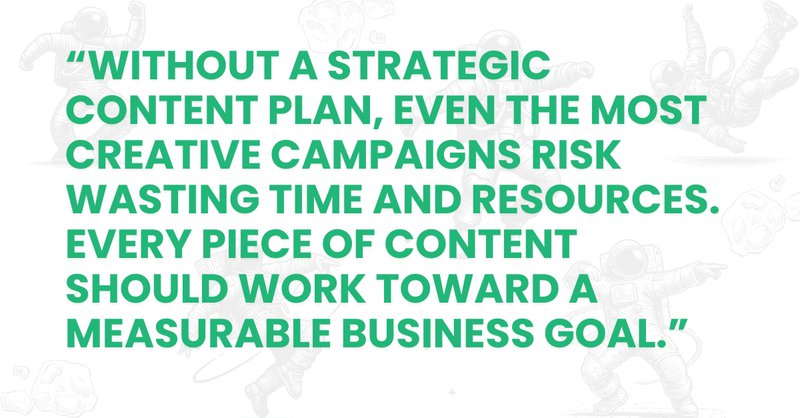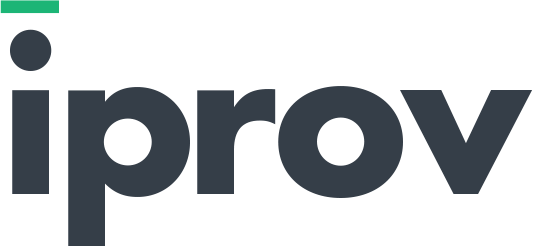
Content creation is everywhere—blogs, emails, videos, and social posts flood digital channels every day. But the big question remains: is all of that effort working? Without a structured content marketing plan, businesses are simply guessing, and guessing does not fuel measurable growth. Strategic content marketing planning is essential for healthcare providers, technology companies, and service-based businesses that want to connect with the right audience, build trust, and convert interest into results.
This guide breaks down the full process of content marketing planning, offering practical steps and strategies to align content with business goals. By following these principles, organizations can stop wasting time on ineffective tactics and start seeing measurable improvements in leads, engagement, and revenue.
Key Takeaways
- Aligning content with business goals ensures every piece supports growth objectives.
- Audience personas help content resonate with real customers and prospects.
- Essential KPIs include traffic, social shares, email signups, time on page, CTR, and conversions.
- Core strategy steps: define goals, build personas, audit existing content, create, distribute, measure, and revise.
- Strategy sets the direction; a content plan manages execution and timing.
- Content audits identify what’s working, what’s outdated, and where opportunities lie.
- Funnel-based content mapping improves customer journey alignment.
- SEO must be integrated early to maximize visibility and long-term results.
- Regular analytics reviews keep the content plan optimized and relevant.
Why Content Marketing Planning Matters
A strong content marketing strategy drives business growth because it links every blog, video, or social post to a measurable outcome. Without clear alignment between business objectives and content initiatives, even the most creative campaigns risk wasting valuable time and resources. For example, a healthcare provider aiming to increase patient inquiries should not focus solely on vanity metrics like social likes; instead, content should be tied to lead generation, such as driving form submissions or appointment bookings.
Learn more about the importance of content strategy here.
Aligning Content with Business Objectives
When content is created without a business-focused strategy, it lacks direction. A results-driven content marketing plan ensures every piece works toward a clear objective:
- Lead generation → Create guides, webinars, and case studies.
- Brand awareness → Publish blog posts, thought leadership articles, and short social videos.
- Customer retention → Send email newsletters and share ongoing educational resources.
For example, if the primary goal is to boost email subscribers, then blogs should include relevant lead magnets with signup prompts. When aligned properly, content becomes a tool that drives results instead of just filling space.
The Role of Audience Personas
Generic content rarely resonates. Audience personas bring clarity by defining the exact type of customer the content should serve. A persona might represent a busy parent researching healthcare options or a tech manager evaluating software solutions. By documenting details such as age, job role, goals, and frustrations, businesses can tailor messages that feel personal and relevant.
Research methods for building personas include customer interviews, website analytics, CRM data, and competitor analysis. Once established, personas influence everything from tone of voice to publishing schedules, ensuring the content truly speaks to its intended audience.
Content Marketing Planning: Setting Key Performance Indicators (KPIs)
KPIs provide the scorecard for success. Tracking the right metrics ensures accountability and helps refine the strategy. Common KPIs include:
- Website traffic from organic search
- Social media engagement and shares
- Newsletter signups
- Time spent on page
- Click-through rates
- Leads and conversions from gated content
For instance, if lead generation is the priority, then metrics such as signups or demo requests should take precedence over vanity indicators like impressions. Analytics platforms such as Google Analytics, HubSpot, or SEMrush make performance tracking more effective.
Core Steps in Strong Content Marketing Planning
The SQuAD framework—Set goals, Know your audience, Audit content, and Develop distribution—is a repeatable process for building effective strategies:
- Define goals – Identify measurable business objectives.
- Know your audience – Build detailed personas.
- Audit existing content – Evaluate what’s driving engagement and conversions.
- Develop a distribution plan – Decide what content to create, where to publish, and how to promote it.
- Measure results – Use analytics to track outcomes.
- Revise regularly – Update based on data insights.
Following this process keeps content creation purposeful, organized, and tied to outcomes.
Strategy vs. Content Plan
It is important to distinguish between a strategy and a plan:
- Strategy → Defines why content is being created, who it serves, and how it ties to business goals.
- Plan → Outlines logistics such as publishing schedules, topics, deadlines, and assigned responsibilities.
Both are essential. A strategy without a plan lacks execution. A plan without a strategy lacks vision.

Conducting a Content Audit
Before launching new initiatives, businesses should review their existing content library. A content audit assesses topic relevance, format, publishing channel, traffic performance, and engagement metrics.
Steps include:
- List all content assets (blogs, web pages, videos, emails).
- Identify content that drives the most traffic or conversions.
- Flag outdated or underperforming pieces.
- Update, repurpose, or consolidate where appropriate.
For example, a blog that ranks well but contains outdated statistics can be refreshed with new data and visuals. A case study can be repurposed into social posts, infographics, or short videos.
Explore the importance of a content strategy framework here.
Content Mapping Across the Customer Journey
Content should be mapped to different stages of the buyer’s journey:
- Top of Funnel (TOFU) → Blogs, infographics, social clips to raise awareness.
- Middle of Funnel (MOFU) → Case studies, whitepapers, webinars to build trust.
- Bottom of Funnel (BOFU) → Product demos, testimonials, pricing pages to encourage action.
This mapping ensures prospects receive the right information at the right time, ultimately improving lead nurturing and conversion rates.
Choosing Content Types and Formats
Not all content performs equally across the funnel. Selection should be guided by the audience’s needs and business objectives:
- Short-form (social posts, quick videos) → Builds reach and engagement.
- Long-form (in-depth guides, pillar pages) → Boosts SEO and authority.
- User-generated content (UGC) → Enhances credibility and trust.
- Branded campaigns → Amplify major launches or announcements.
A balanced mix ensures authenticity while maintaining consistency.
Generating Content Ideas Consistently
Sustainable content planning requires a steady flow of fresh ideas. Proven methods include:
- Collecting customer questions from sales and service teams.
- Reviewing search data from tools like AnswerThePublic or Google “People Also Ask.”
- Studying competitor blogs and industry forums.
- Maintaining an internal idea bank shared across teams.
Prioritization should always align with business goals, ensuring ideas are relevant and impactful.
Tools for Content Marketing Planning
Effective tools streamline content planning and execution:
- Trello/Asana → Task and project management.
- Notion/Airtable → Idea banks and content calendars.
- Buffer/Sprout Social → Scheduling and publishing.
- Google Sheets/HubSpot Templates → Free customizable planning calendars.
The right tool depends on team size, workflows, and scalability needs. Find more information on content calendar planning here.
Designing Editorial and Content Calendars
A well-structured calendar keeps execution on track:
- Editorial Calendar → Broad view of monthly themes and goals.
- Content Calendar → Detailed schedule with topics, formats, deadlines, and owners.
Key elements include publishing dates, assigned authors, target audience, funnel stage, and call-to-action links. Consistency is vital—weekly blogs, daily social posts, or monthly newsletters create predictable engagement.
Optimizing for SEO
Search optimization must be integrated from the beginning of content marketing planning. Keyword research using tools like Moz, Ahrefs, or SEMrush identifies opportunities for visibility. The cluster model—a main pillar post supported by related articles—builds topical authority.
SEO optimization should include:
- On-page keyword integration (titles, headers, metadata).
- Internal linking strategies.
- Regular content updates.
- Monitoring results via Google Search Console.
Storytelling and Calls to Action
Facts inform, but stories persuade. Storytelling makes content memorable, while clear calls-to-action (CTAs) drive measurable outcomes. CTAs should be:
- Action-oriented ("Start your trial," "Download the guide").
- Benefit-driven (highlighting the value of the next step).
- Personalized for the funnel stage.
Pairing storytelling with CTAs transforms content from passive reading into active engagement.
Measuring and Revising the Content Plan
Content performance should be monitored continuously. Key metrics include:
- Traffic → Indicates reach.
- Engagement (shares, comments) → Reflects resonance.
- Conversions → Demonstrates ROI.
- Lead generation → Shows pipeline contribution.
Quarterly reviews ensure the content strategy adapts to shifts in customer behavior, market trends, or business priorities. Benchmark comparisons with industry averages can reveal whether performance is competitive.
Ready to Start Your Brand’s Content Marketing Planning?
Ready to see how smarter content marketing planning can transform growth? iProv partners with healthcare, tech, and service-based businesses to create strategies that actually work. From aligning content with business goals to building systems that deliver measurable ROI, the right plan makes every piece count. Explore more insights on content strategy and why it matters, or take the next step by connecting with iProv today—because the best time to build a plan that drives results is now.
